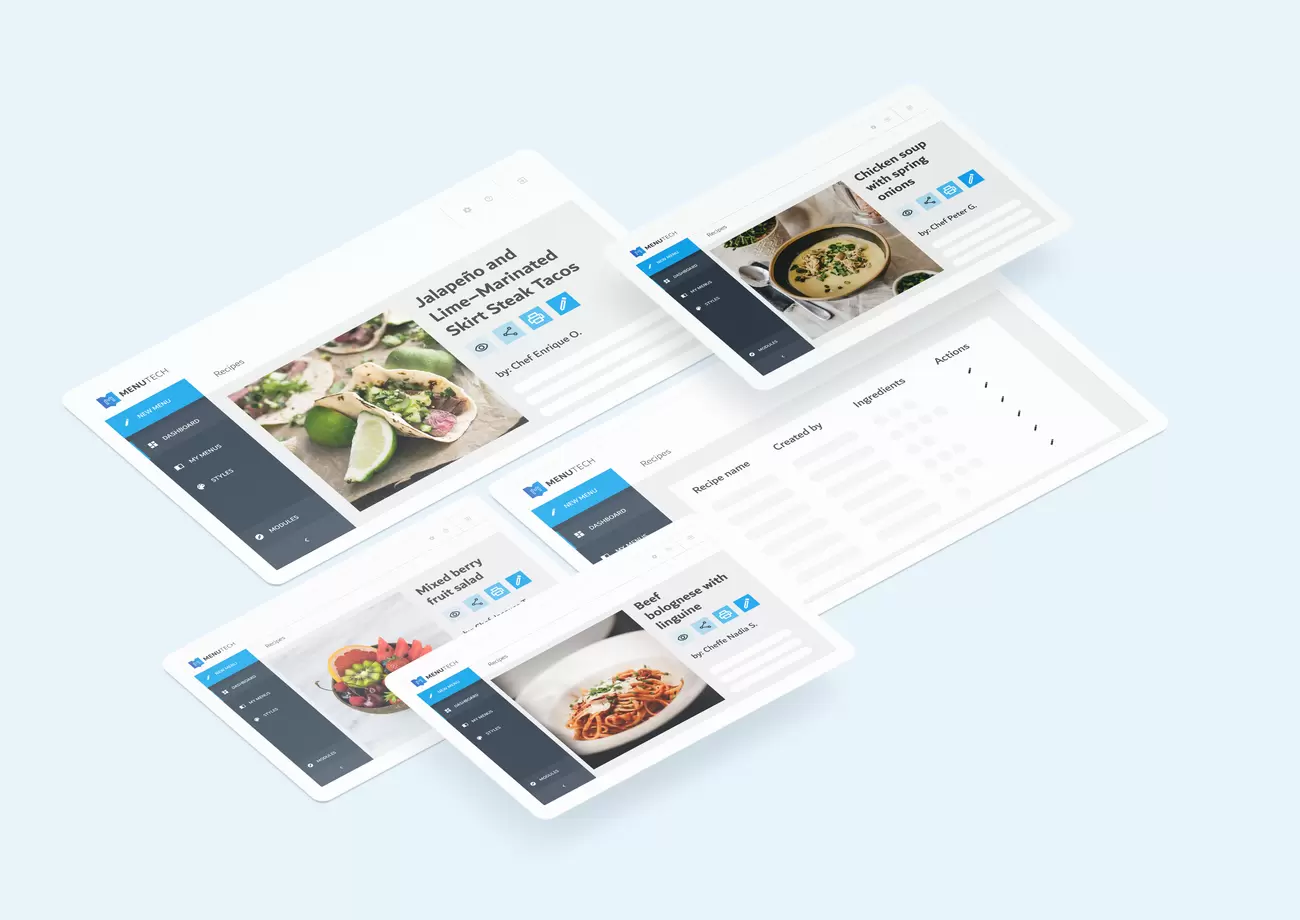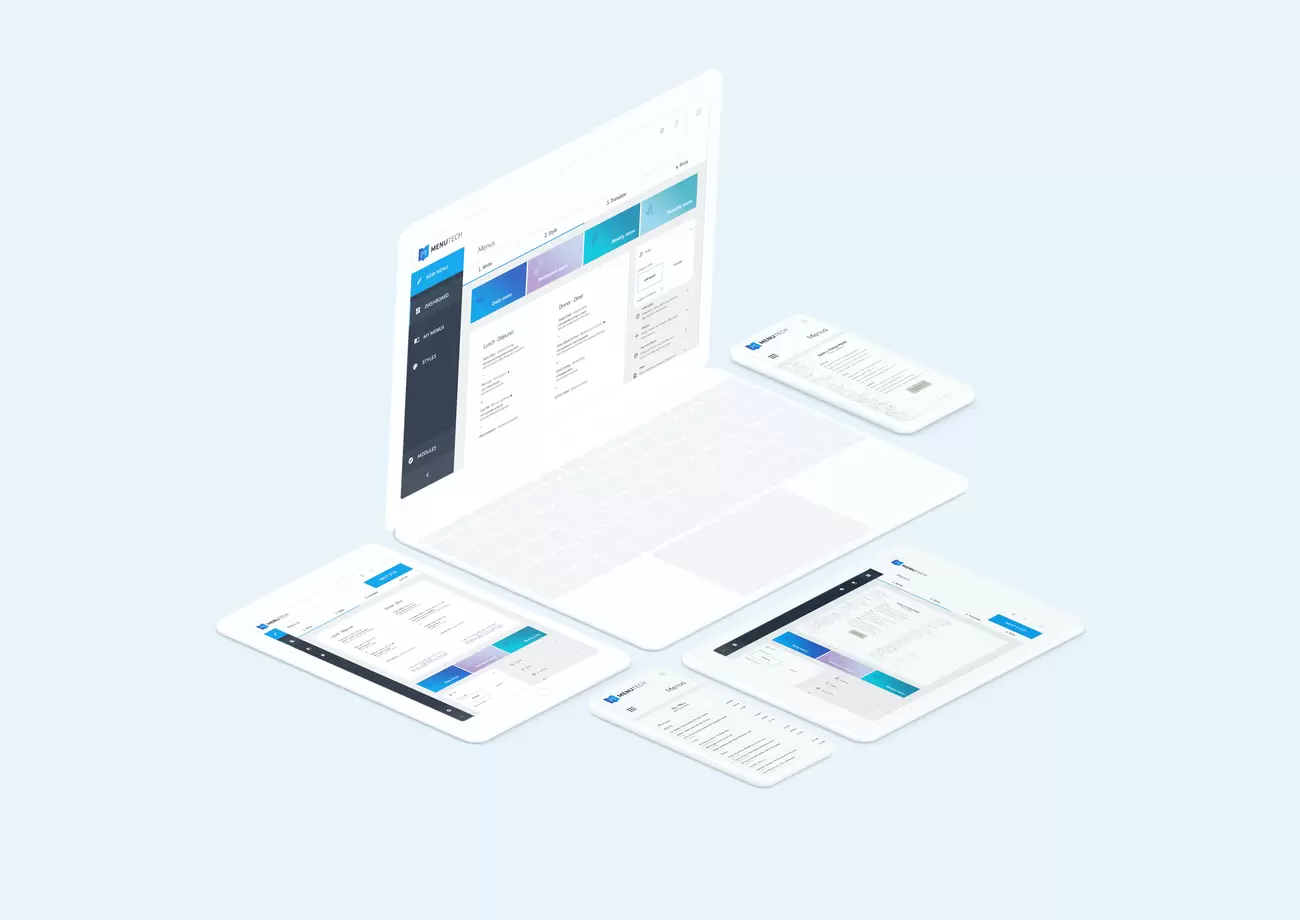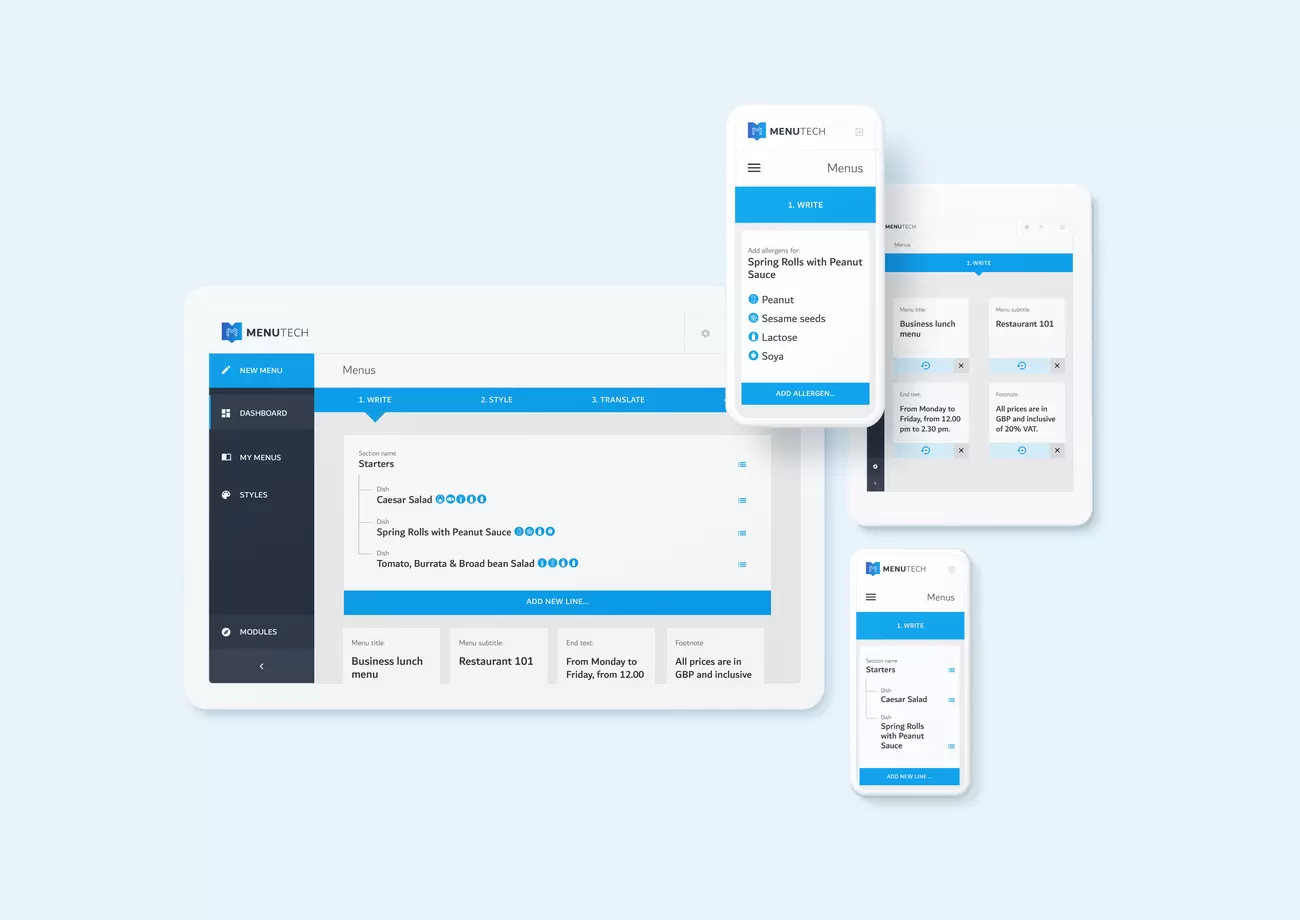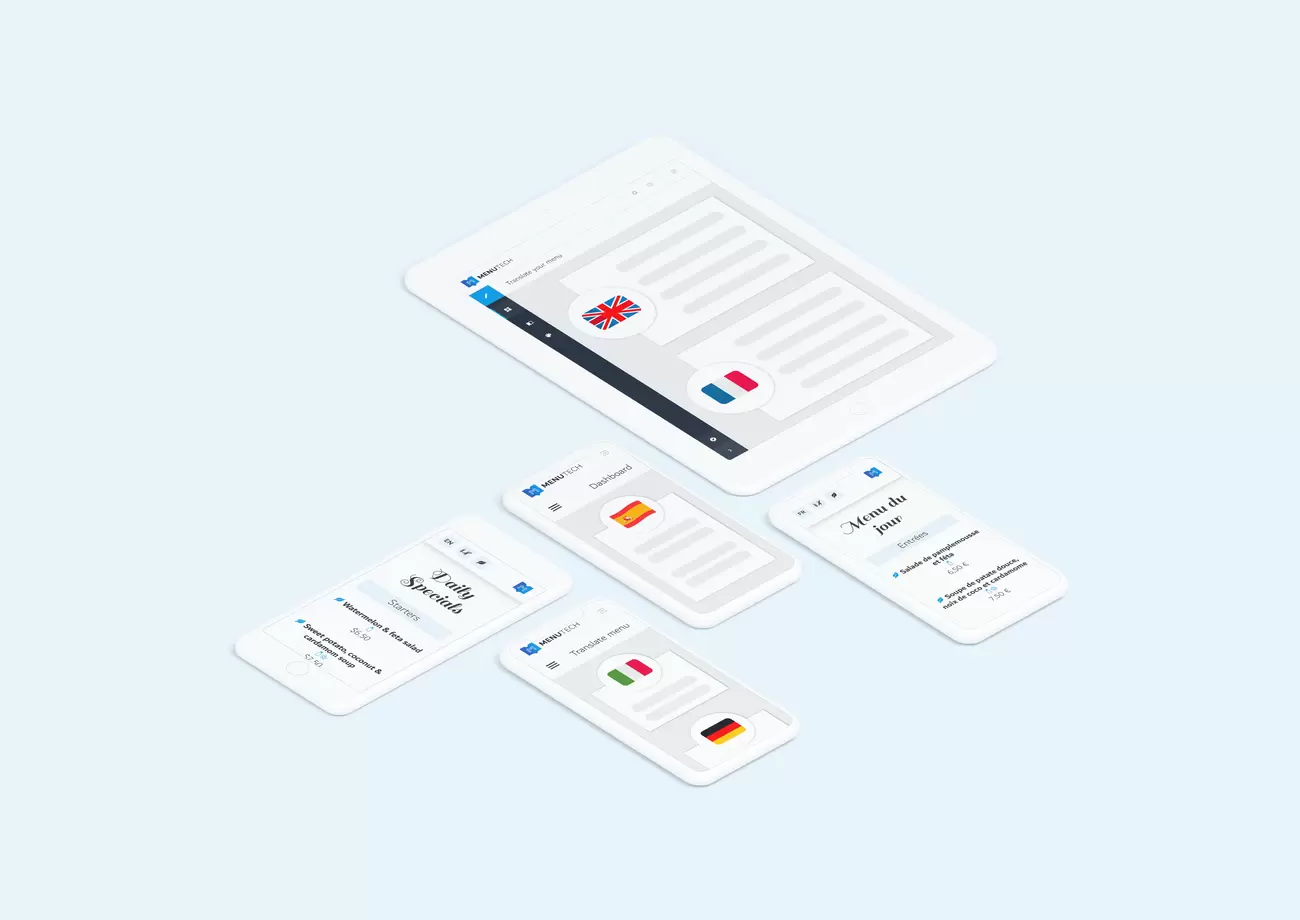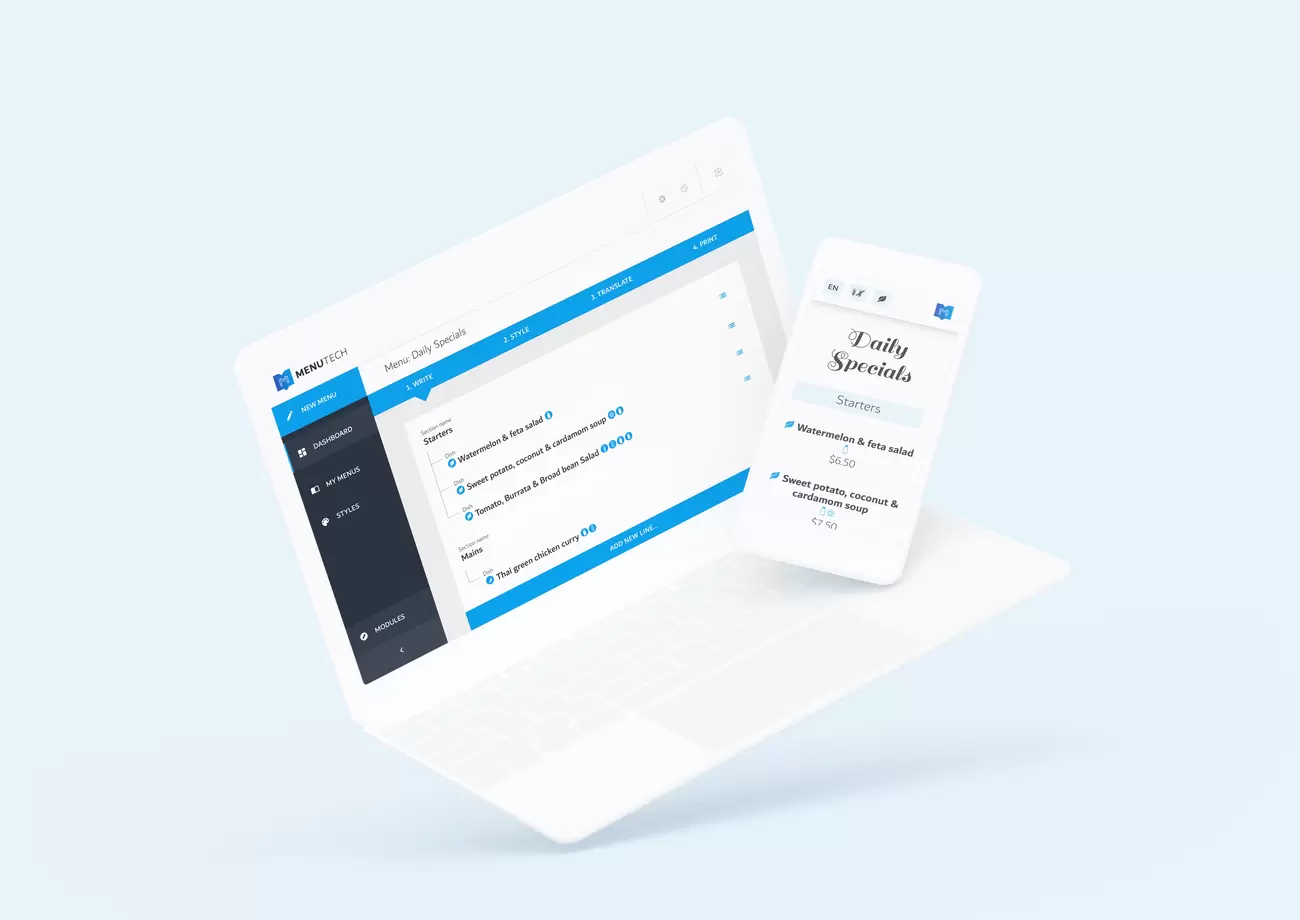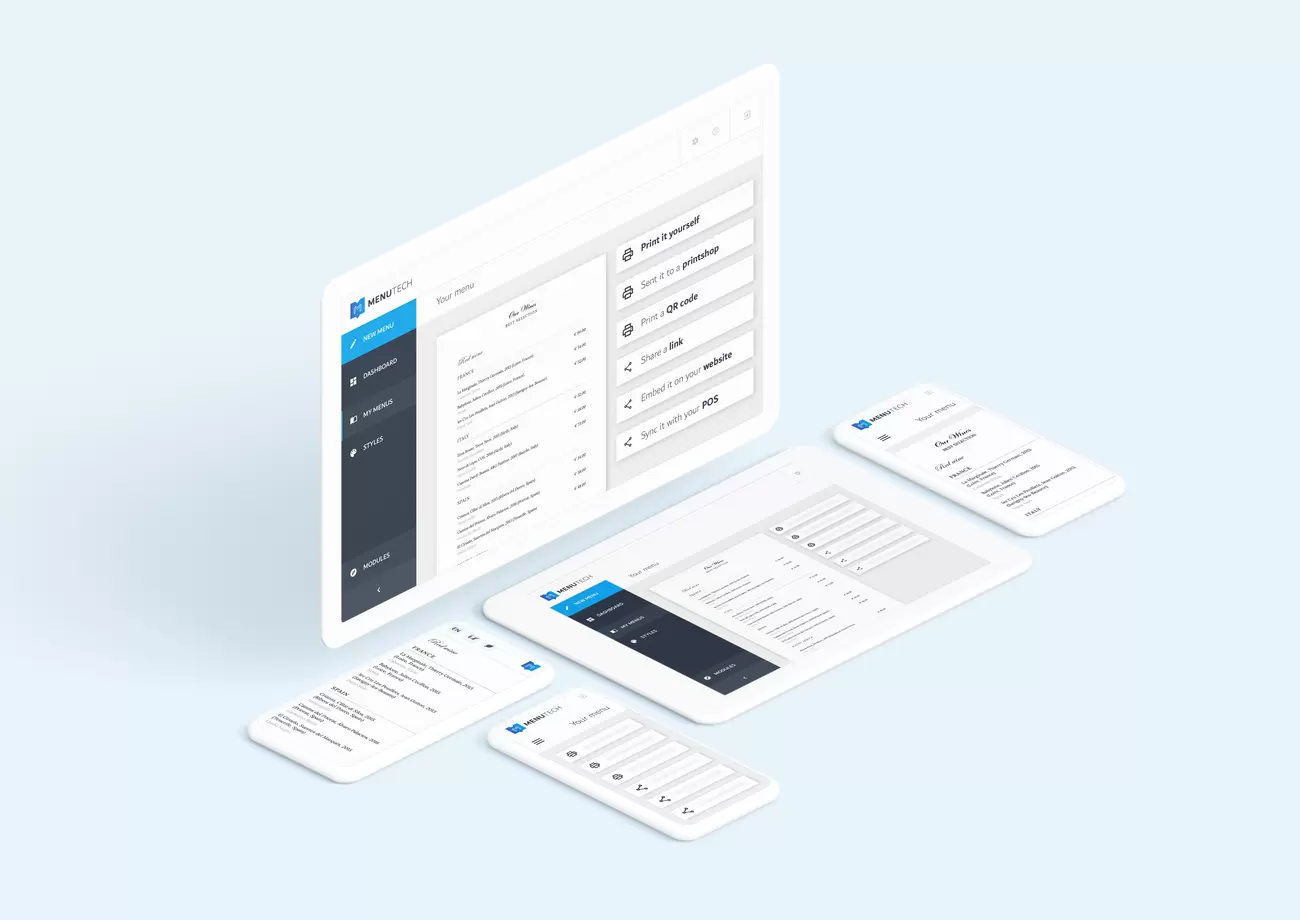Creating food menus for hospitals and nursing homes requires good planning.
Top 11 Tips For Crafting the Perfect Restaurant Menu
Laure Joumier . 12 September 2022
Your restaurant’s menu has the ability to make or break you. Common mistakes like including too many choices, not using pictures, and using a cluttered menu design can be a major turn-off to guests and negatively affect the success of your restaurant. Alternatively, making just a few simple menu tweaks can help your business to thrive.
At Menutech, we have helped over 10,000 restaurants craft perfect restaurant menus. Along the way, we have learned a number of important tips with the ability to make a huge difference in your restaurant. By implementing these impactful tips, you can increase profitability and keep your customers coming back.
Here are the top 10 tips for crafting the perfect restaurant menu:
1. Make sure the menu is easy to read.
I was once at a restaurant that was quite dark inside as part of its chic aesthetic. This could have been a huge mistake, as it would have made an ordinary menu nearly impossible to read without a flashlight. However, the restaurant menus were displayed on lit screens so guests could easily read them. It was brilliant!
While you probably don’t need to go this far, it’s important to avoid hard-to-read fonts, an overload of culinary jargon, and overly long descriptions. Guests, on average, spend under two minutes reading a menu. Keep your menu design simple and easy to read to make the most of those two minutes.
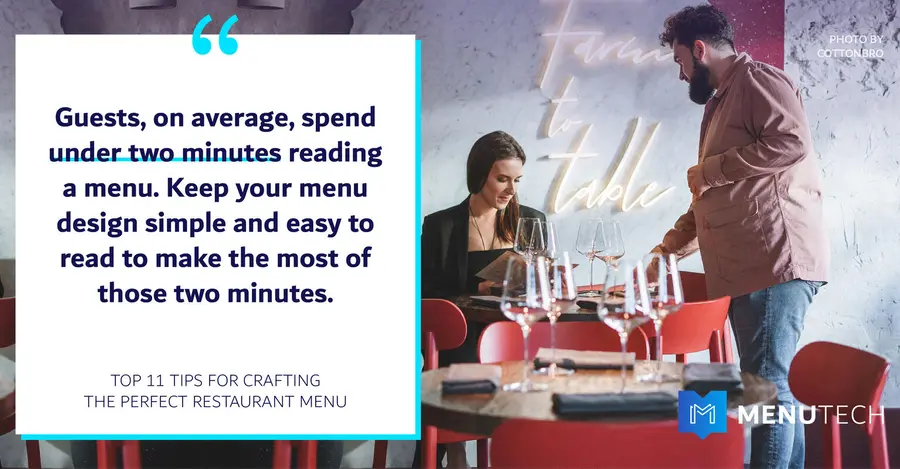
2. Don’t overwhelm the customers with choices.
While it can be tempting to add as many dishes as you think you can feasibly make, avoid this temptation. It would likely just result in tons of wasted food, mediocre dishes, and overwhelmed customers.
It’s always better to offer 15 dishes you can execute flawlessly than to offer 50 dishes you can execute averagely, so keep it simple. The sweet spot is sticking to 6-8 dishes per section.
This gives the customers a solid amount of choices, without confusing them or stressing them out with too many.
3. Choose a cohesive design that makes sense.
Your menu design should be reflective of your restaurant’s style and identity. For example, the menu design at a casual beachfront bar should be completely different from the menu design at an upscale steakhouse in the city.
At Menutech, we offer more than 30 customizable menu styles for you to choose from. This allows you to ensure that you select the menu design that is right for your restaurant.
4. Keep the menu to a single page.
As a rule, a restaurant menu should always be kept to one page. Customers typically don’t like having to flip over the menu and most will make their ordering decision based on whatever they saw on the first page. Many customers assume the menu is only on one page and won’t even flip it over at all!
If your menu is as concise as it should be, only one side of one page should be necessary. However, if sticking to a single page means having to use a font size so tiny that people are squinting to read the words, then it’s time to shorten the menu.
5. Stick to a consistent and reasonable pricing strategy.
Make sure that the prices of your food are reflective of the amount it costs you to make each dish. The goal here is to increase profitability (typically 25% to 35%) while maintaining affordable prices that customers are willing to pay.
You also want to avoid having to over-price any particular dish because it uses an ingredient that is only used for that specific dish. Try to keep your ingredients versatile so they make economic sense for your restaurant.
6. Use psychology to your advantage.
Many studies have been done on menu design and the ways that customers read restaurant menus. With the help of a few simple psychology tricks, you can increase the profitability of your restaurant by slightly altering the menu.
Research has shown that when customers look at a menu, their eyes first go to the middle and top corners. Place your more popular dishes in these areas, since it is highly likely that they will be the first dishes your customers see on the menu.
Another helpful trick is the deliberate use of color. Believe it or not, color is a powerful form of communication. Have you ever wondered why the color red is used so often on menus? Experts believe that:
- Red makes people hungry.
- Yellow is an attention-grabbing color.
- Blue is a calming color.
- Green is said to be symbolic of nature; which is why many health food restaurants use this color on their menus.
When choosing the colors for your menu, think about the way you want your customers to feel when they’re in your restaurant.
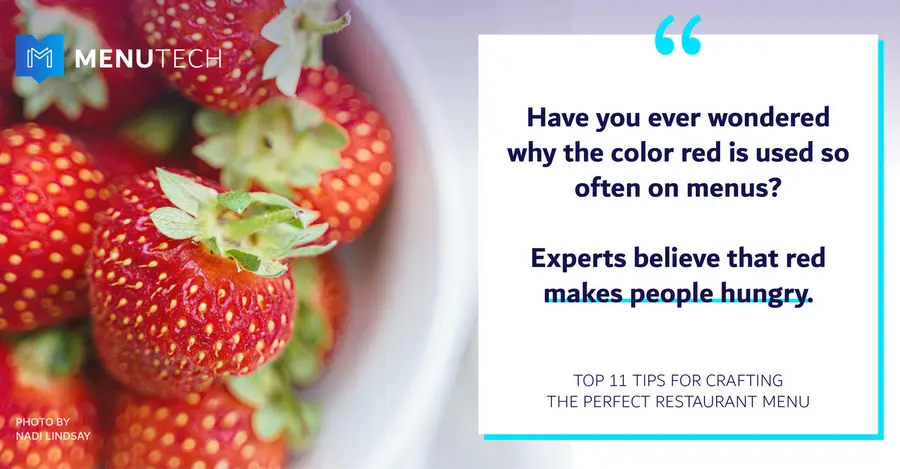
7. Don’t underestimate the power of strong descriptions.
First things first, you should always include a brief description of the dish underneath the name. However, simply including a description is not enough. You don’t just want the dish to sound good, you want the customer to be salivating in anticipation of eating it.
Rather than just listing out the key ingredients, use the description to paint a picture for the customers. Swap out “spaghetti with tomato sauce, meatballs, and cheese” for something like “spaghetti coated in our house-made tomato sauce with freshly-ground beef meatballs, finished with grated pecorino cheese.”
The goal is to use as few words as you can, while still writing an over-the-top description that pops off the page. Not the best writer? Consider hiring a copywriter to take care of the item descriptions for you, and let Menutech's automated design and translation solution do the rest.
8. Use photos, but not in excess.
Including one or two photos in the menu can be a great way to highlight how fantastic your food looks, but overloading the menu with photos can come off as tacky. While photos aren’t a necessity, they can be beneficial to your profitability—when done right.
Avoid using stock photos for your menu. You want the photos to be representative of how the dishes look in real life, but in the best possible light, angle, and photo quality. I recommend using a professional photographer to snap any photos you plan on including on the menu.
9. Highlight your high-margin items.
Many restaurants utilize a key to insert a small icon (like a star, for example) next to the best-selling dishes on their menu. By highlighting the high-margin items in each section, you can help to ease the decision-making process of the customers. However, keep it minimal—highlight no more than two items per section.
If a particular item on your menu does extraordinarily well, make it known!
Allow the restaurant menu to work for you by using it to inform customers which dishes are the most popular. Not only does this reduce the time they spend deciding what to eat, but it also helps to guarantee that they will love their meal.
10. Remove the focus from the price.
When customers are reading your menu, you want their focus to be on how delicious your food sounds, not how expensive it is. Make the font size of the prices smaller than the font size of the names of the dishes. This helps to make the price more of an afterthought, rather than the central focus.
Another great way to remove the focus from the price is by taking out the dollar sign and leaving just the number, ideally in a slightly lighter font color than the rest of the text. You can quickly do this on Menutech's customisable menu templates. By shifting the focus of the customer, you can help them make a selection based on what sounds the tastiest, rather than simply choosing the cheapest dish.
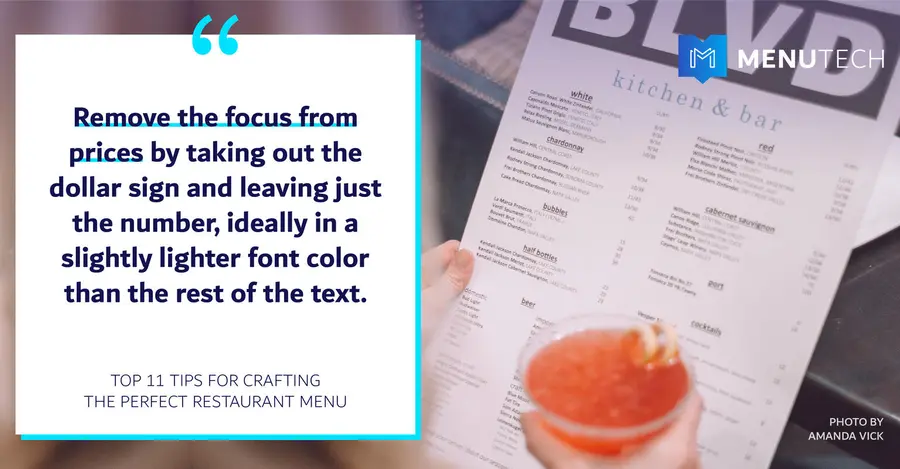
11. Be transparent about the food contained in your menu items.
There’s nothing worse than ordering a dish that sounds fantastic, only to have it come and realize that you can’t eat it because of an allergen in the dish that wasn’t listed in the restaurant menu description.
When a guest has to send back their dish, not only does it put a damper on their experience in your restaurant; but it contributes to food waste and a loss of profits for your business as well.
By incorporating clear dietary and allergen declarations on your menu, you can ensure that each of your guests feels welcomed in your place of business.
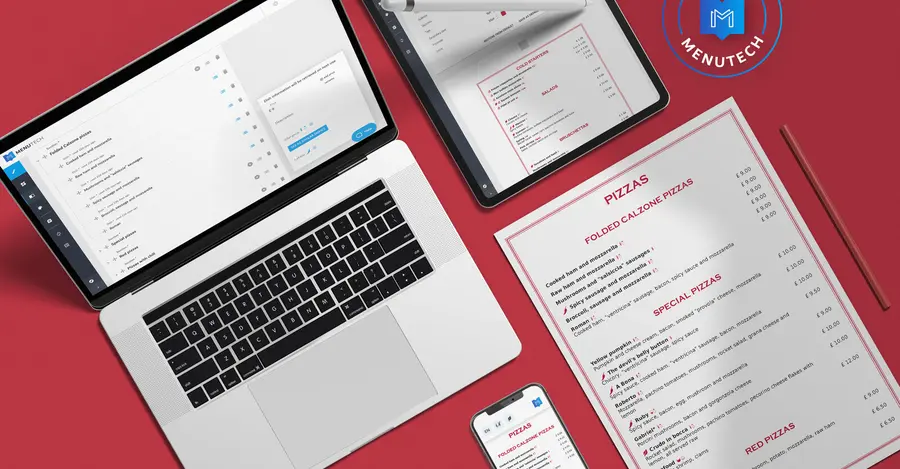
By following these simple tips on how to perfect your restaurant menu, you can significantly increase your restaurant’s profitability and keep your customers coming back for years to come.
Sources:
- “Things You Should Know About Restaurant Menus” by Lorri Mealey
- “6 Tips for Making Restaurant Menus More Effective” by Humanity
- “The Psychology of Menu Design: Reinvent Your 'Silent Salesperson' to Increase Check Averages” by Dave Pavesic
- “10 Tips for Delicious Menu Design” by Design Shack




